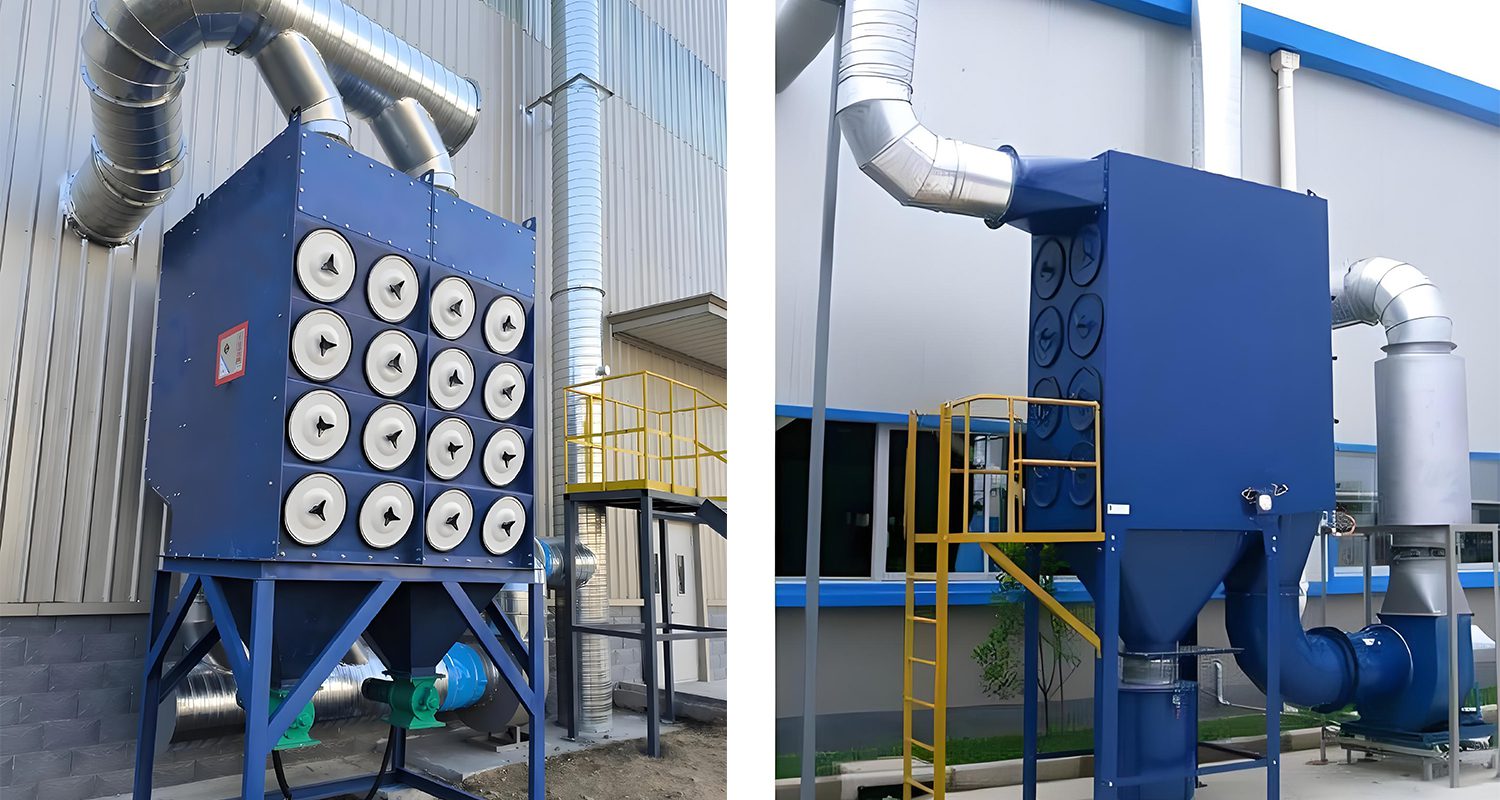Cartridge dust collectors use cartridges as filtering elements and employ pulse jet technology. They offer significant advantages, such as small size, high efficiency, low investment, and easy maintenance. As a result, they have become an important choice in the industrial dust collection field. In recent years, new technologies and materials have improved the structure and filter media of cartridge dust collectors, leading to widespread applications in industries like cement, steel, power, food, metallurgy, and chemicals.
What is a Cartridge Dust Collector?
A cartridge dust collector is an industrial air filtration system that uses pleated filter cartridges (instead of traditional bags) to capture fine particulate matter as small as 0.3 microns.
Key Components:
✔ Filter Cartridges – Pleated design offers 3-5x more surface area than bags
✔ Pulse Jet System – Compressed air (5-7 kg/cm²) cleans filters automatically
✔ Housing – Compact steel enclosure for hazardous environments
Working Principle:
Dusty air enters through the inlet duct
Particles are trapped on the cartridge surface
Clean air passes through the pleated media
Pulse valves blast accumulated dust into the hopper
Baghouse vs Cartridge Dust Collector: Key Differences
| Feature | Cartridge Collector | Baghouse |
|---|---|---|
| Filter Media | Pleated cartridges | Long fabric bags |
| Filtration Area | 2000+ m² (compact) | 500-1500 m² |
| Particle Capture | Down to 0.3μm | Typically 1μm+ |
| Pressure Drop | 30% lower | Higher |
| Maintenance | Cartridge replacement every 2-3 years | Bag replacement annually |
When to Choose Which:
Cartridge: Space-limited plants handling fine dust (e.g., pharmaceuticals)
Baghouse: High-temperature gases (>120°C) or coarse particulates
Why Cartridge Dust Collectors Dominate Industrial Applications
Modern cartridge dust collection systems have revolutionized particulate control across industries:
Cement plants: Capture fine kiln dust (PM2.5)
Steel mills: Handle heavy metal particulates
Food processing: Meet FDA air quality standards
Chemical facilities: Filter toxic powders
Key Advantages vs Traditional Collectors:
| Feature | Cartridge Collector | Baghouse | Electrostatic |
|---|---|---|---|
| Filtration Area | 2000+ m² (GB6719-86) | 500-1500 m² | N/A |
| Pressure Drop | 30% lower | Standard | High |
| Footprint | Compact | Large | Massive |

Critical Technical Specifications
1. Pulse Jet Pressure Optimization
Ideal Range: 5-7 kg/cm² (71-100 psi)
Consequences of Deviation:
<5 kg/cm²: Incomplete cleaning → Increased ΔP
>7 kg/cm²: Cartridge damage → $3,000+ replacement costs
2.Structural Breakthroughs
3x Capacity Increase via hexagonal cartridge packing
PTFE Nano-fiber Media: 0.3μm particle capture
3. Step-by-Step Maintenance Guide
1. Adjusting Pulse Pressure
Power on control cabinet
Activate cleaning cycle
Verify pulse valve “whoosh” sound
Monitor pressure gauge (5-7 kg/cm²)
2. Monthly Checklist
Air compressor oil level
Solenoid valve operation
Cartridge wear (check for pinholes)
4. Industry-Specific Applications
1. Cement Industry
Challenge: High silica content
Solution: Abrasion-resistant cartridges
2. Food & Pharma
Regulation: FDA 21 CFR Part 11
Upgrade: FDA-grade stainless steel housings
Conclusion
As industrial demand continues to grow, cartridge dust collectors are becoming the preferred equipment for dust collection in various industries due to their efficiency, energy savings, and ease of maintenance. By properly adjusting and maintaining the pulse jet pressure, you can maximize the performance of the dust collector and ensure a clean and safe production environment. If you have any questions about cartridge dust collectors or need professional advice, please feel free to contact us. We are here to help!

